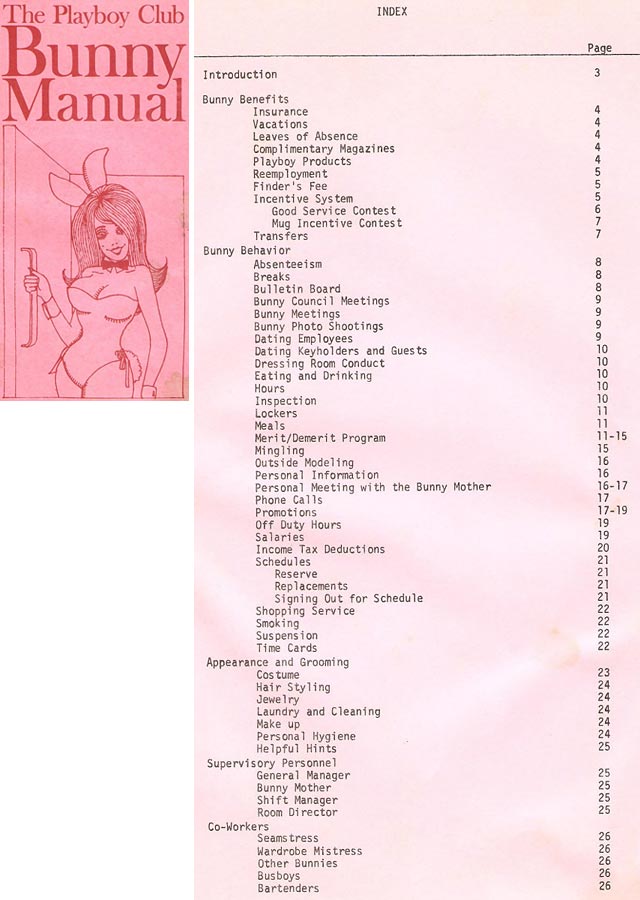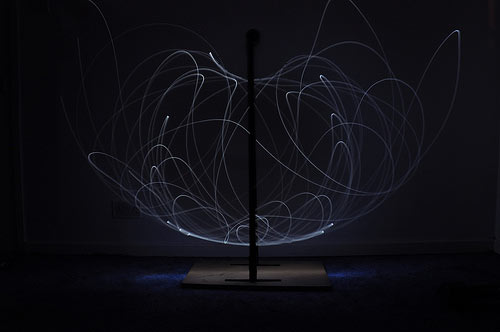
If your children happened to be born since the year 2000 in developed countries, they will most likely live to be 100, and they will be healthier than elderly people in previous generations, according to a recent article in the medical journal The Lancet. (…)
The gain of about 30 years in life expectancy in Western Europe, the U.S., Canada, Australia and New Zealand — and even more in Japan, Spain and Italy — “stands out as one of the most important accomplishments of the 20th century.” Furthermore, most babies born since 2000 in these countries will “celebrate their 100th birthdays if the present yearly growth in life expectancy continues through the 21st century.” The authors expect that it will: “Continued progress in the longest living populations suggests that we are not close to a limit, and [a] further rise in life expectancy seems likely.”
Given that individuals over the coming decade may routinely expect to work well into their 70s and 80s, what kind of environment can they look forward to? “The good news is that the world of work is changing by itself” in ways that will make it more receptive to older employees, says Peter Cappelli, director of Wharton’s Center for Human Resources. “It’s already easier to work at a distance, easier to telecommute…. The physical demands [of many jobs] are falling, commitments are shorter-term, outsourcing of all kinds is on the rise and there is more contract work — all of which makes it simpler for people to come in and out of the workplace, at least in principle….. The question is, to what extent will employers actually embrace older workers and incorporate more flexibility with respect to schedules, less supervision and more empowerment?”
One potential hang-up centers on the fact that older workers, as they stay on the job longer, are likely to be increasingly supervised by younger managers, says Cappelli.
{ Knowledge@Wharton | Continue reading }
related:

{ How many people have ever lived? | Enlarge }
economics, future, health |
December 16th, 2009
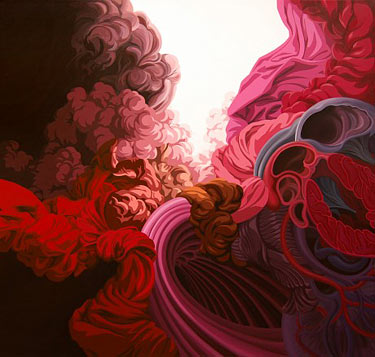
An abundance of brain scans, experimental studies and case histories has, in the end, failed to answer certain vital questions: What is music? Where can we find it in the brain? Why does it do what it does to us?
The brain is, in essence, a musical instrument—taking bits of material from a world of chaos, then shaping and modulating them into one graceful, lyrical stream. Yet, despite some scientific success in mapping its discrete compartments, it is an organ that resists efforts to render its workings in black and white. Cognition involves processes that are simply too wide-ranging and complex to be assigned to a single anatomical location.
Scientists have had to grapple with this, as well as with what is known as “plasticity.” At a recent conference on “Emotion, Music & the Brain” (…) Concetta Tomaino explained the phenomenon: “Simply put, the brain changes as it experiences and learns.” In effect, those attempting to pin down its internal circuitry are chasing a moving target.
Yet, the plasticity that reshapes the brain as we grow is also a blessing. “The challenge is in knowing how it can change when there is damage,” says Dr. Tomaino, “and then working with the neural networks that are still available.”
{ Wall Street Journal | Continue reading }
artwork { James Roper }
brain, music, science |
December 16th, 2009
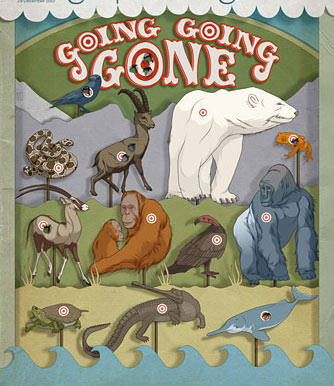
The success of many attacks on computer systems can be traced back to the security engineers not understanding the psychology of the system users they meant to protect. We examine a variety of scams and “short cons” that were investigated, documented and recreated for the BBC TV programme The Real Hustle and we extract from them some general principles about the recurring behavioural patterns of victims that hustlers have learnt to exploit.
We argue that an understanding of these inherent “human factors” vulnerabilities, and the necessity to take them into account during design rather than naïvely shifting the blame onto the “gullible users”, is a fundamental paradigm shift for the security engineer which, if adopted, will lead to stronger and more resilient systems security.
{ Understanding scam victims: Seven principles for systems security | University of Cambridge | PDF }
illustration { Richard Wilkinson }
ideas, psychology, scams and heists |
December 16th, 2009
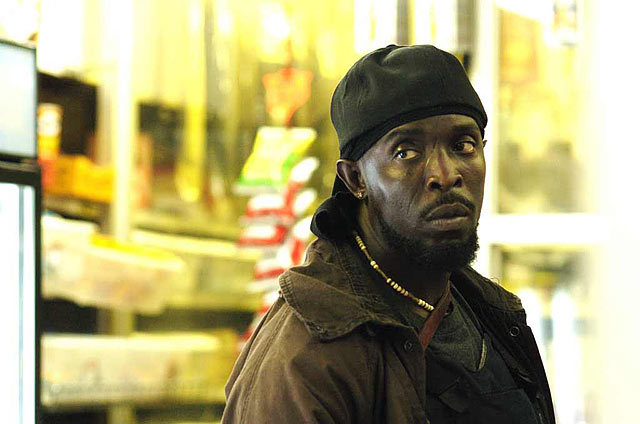
But if there was one show that exemplified the highest aspirations of TV-as-art, it was The Wire. Airing from 2002 to 2008, it was the single best show in the history of television, a (yes) Dickensian portrait of an entire city’s corruption. Show-runner David Simon was a classic aughts auteur: arrogant, grudge-bearing, with a bullheaded sense of artistic entitlement. The show he created never became a pop sensation like The Sopranos; it attracted a cult following. Yet despite the show’s tiny fan base, it symbolized what truly brilliant TV could be. A portrait of Baltimore in decay, the series built, over 60 episodes, a prismatic, mordantly funny, bleak, and enraging universe of drug dealers, cops, pier workers, teachers, politicians, journalists, and do-gooders. Animated by a slow-burn moral outrage, it was grounded in Simon’s experience as a crime reporter. And it featured an astonishingly diverse set of African-American male and female characters, often playing roles other crime series would have reduced to fungible thugs. (Standouts included Idris Elba’s stunning turn as business-student/kingpin Stringer Bell.) But the series’ sneakiest achievement may have been the way it elevated, shattered, and remade the format of the police procedural, spider-webbing that old scaffolding with numberless subplots, bits of crackling dialogue, sickening and subtle imagery. Over the seasons, The Wire generated a sheer narrative density that demanded and assumed an intelligent audience was out there, willing to interpret. No wonder critics kept reassuring readers that the show wasn’t homework: It was worth the devotion it required.
{ NY mag | Continue reading }
related { The Wire Files | What Do Real Thugs Think of The Wire? }
showbiz |
December 16th, 2009
leisure, visual design |
December 16th, 2009
Paul A. Samuelson, the first American Nobel laureate in economics and one of the foremost academic economists of the 20th century, died Sunday at his home in Belmont, Mass. He was 94.
{ NY Times | Continue reading | Read more: Nobelprize.org }
It’s hard to convey the full extent of Samuelson’s greatness. Most economists would love to have written even one seminal paper — a paper that fundamentally changes the way people think about some issue. Samuelson wrote dozens: from international trade to finance to growth theory to speculation to well, just about everything, underlying much of what we know is a key Samuelson paper that set the agenda for generations of scholars.
{ Paul Krugman/NY Times | Continue reading }
Q: “At this stage, how would you rank Keynes?”
A: “I still think he was the greatest economist of the twentieth century and one of the three greatest of all time.”
Q: “Who are number one and number two?”
A: “Adam Smith and Leon Walras.”
Walras was a nineteenth century French economist who taught at the University of Lausanne. He was the first economist to write down the equations for a ‘general equilibrium’ of the entire economy, incorporating the markets of everything from sugar to iPods. He is widely regarded as the founder of mathematical economics. “We all march in his footsteps,” Samuelson said of Walras. (…)
“Like herpes, math is here to stay,” he said.
{ Interview with Paul Samuelson | New Yorker | Continue reading | And more: Falken Blog }
economics |
December 16th, 2009
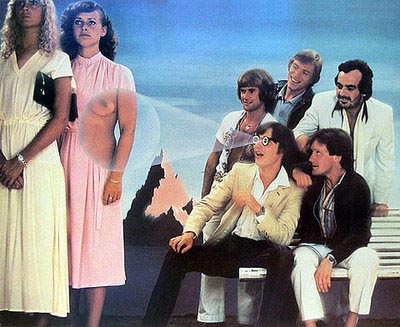
Tonight I walked into the Fedex Kinkos store on Calhoun Street here in Charleston, SC to print our Christmas cards, only to have the clerk, Tammy Johnson, reject my order as obscene.
We Cringelys are known for our Christmas cards, I admit, because we make them ourselves and we’re naked.
The tradition began by accident and now our cards are so popular friends remind us to send them. Making naked Christmas cards that are tasteful isn’t easy, either, but we do it.
{ Robert Cringely | Continue reading }
experience, visual design |
December 16th, 2009

Taxicab geometry, considered by Hermann Minkowski in the 19th century, is a form of geometry in which the usual metric of Euclidean geometry is replaced by a new metric in which the distance between two points is the sum of the (absolute) differences of their coordinates.
The taxicab metric is also known as Manhattan distance, or Manhattan length, with corresponding variations in the name of the geometry. The latter names allude to the grid layout of most streets on the island of Manhattan, which causes the shortest path a car could take between two points in the city to have length equal to the points’ distance in taxicab geometry.
{ Wikipedia | Continue reading }
mathematics, new york |
December 16th, 2009

Once again, I hear the siren song of Toxoplasma, the parasite that dwells in the brains of 50 million Americans.
Toxoplasma gondii is an extraordinary creature. (…) This single-celled organism has a life cycle that takes it from cats to other mammals and birds and back to cats again. Studies have shown that the parasite can alter the behavior of rats, robbing them of their normal fear of cats–and presumably making it easier for the parasites to get into their next host.
Toxoplasma is astonishingly successful, able to live in thousands of species, including us. Billions of people are infected with Toxoplasma, which they pick up from the soil or from contaminated meat or water. In most people it remains dormant, but even in this quiet state it may also have affect human behavior. Some scientists have linked Toxoplasma to schizophrenia, while others have found personality differences between people with Toxoplasma and those who are Toxo-free. It’s possible that it uses its prey-altering strategy on our brains, too.
All well and good. But now Toxplasma is going big time. Today the Proceedings of the Royal Society of London is publishing a paper called, “Can the common brain parasite, Toxoplasma gondii, influence human culture?”
The paper’s answer? Quite possibly yes.
{ Carl Zimmer/ScienceBlogs | Continue reading | Thanks Teaflax! }
horror, science |
December 16th, 2009

Hotel toilet-paper folding is a common practice performed by hotels worldwide as a way of assuring guests that the bathroom has been cleaned, and sometimes, with more elaborate foldings, to impress or delight guests with the management’s creativity and attention to detail.
The common fold normally involves creating an inverted triangle or V shape out of the first sheet or square on a toilet paper roll. Commonly, the two corners of the final sheet are tucked behind the paper symmetrically, forming a point at the end of the roll. More elaborate folding results in shapes like fans, sailboats, and even flowers.
An automated toilet paper folding machine called “Meruboa” was invented in Japan. With the push of a lever, the device folds the first sheet of toilet paper into a triangle.
{ Wikipedia | Continue reading | Toilet Paper Origami }
economics |
December 16th, 2009
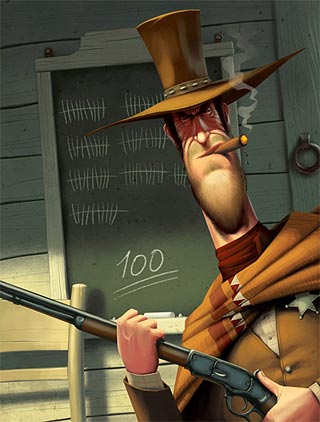
It’s five years today since the world’s most famous computer game, World of Warcraft, began. And I’m both proud and slightly embarrassed to say that I’ve been there since the beginning. (…)
I believe that World of Warcraft matters. Exactly how and why it matters, though, can be hard to get at from the outside; much of what reaches the mainstream media is a muddle of scandals, statistics and pseudo-scientific scraps. So I’d like to take a few moments to recall just what it was like to play this game for the first time five years ago, in the company of an old friend who had managed to wheedle both of our ways onto the game’s American servers in time for launch—and why, five years on, the character I created then is still soldiering on through the northern reaches of the world’s most famous unreal destination.
What struck us, first of all, was just how much it felt like a world: huge, organic, inviting exploration. There were lakes, mountains, rivers, forests, cliffs, towns, cities, and lots of things to squash, splatter, maim and generally exterminate for the sake of various rewards. What struck us shortly after this was that, although there was a game here to be played, there was also an awful lot more to it than simply playing and trying to win. My friend had chosen to play a dwarf warrior as his first character but, unlike any other game we’d encountered before, there was no sense in which he was that character. As far as World of Warcraft was concerned, he was himself, and just happened to be strolling around a vast cartoon world in the guise of an aggressive dwarf. And that was much more interesting, because it meant that—for the first time any of us had known—you could actually be yourself while playing. In fact, you could be all sorts of things that your self didn’t normally manage.
{ Prospect | Continue reading }
image { Denis Zilber }
experience, leisure, technology |
December 16th, 2009
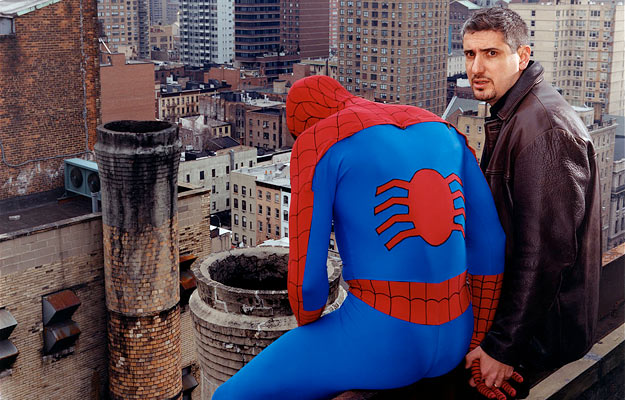
The burning question is why same-sex behaviour would evolve at all when it runs counter to evolutionary principles. But does it? In fact there are many good reasons for same-sex sexual behaviour. What’s more, Zuk and Bailey suggest that in a species where it is common, it is an important driving force in evolution.
{ NewScientist | Continue reading }
I do not undertand why historians and academics, including many gay ones, refuse to believe that homosexuality has been pretty much the same since the beginning of human history.
{ Gay & Lesbian Review Worldwide | Continue reading }
related { Beirut’s gay community }
photo { Mark Heithoff }
relationships, science |
December 16th, 2009
animals, costumes |
December 16th, 2009
visual design |
December 16th, 2009

People have been bringing plants into residential and other indoor settings for centuries, but little is known about their psychological effects. In the present article, we critically review the experimental literature on the psychological benefits of indoor plants.
We focus on benefits gained through passive interactions with indoor plants rather than on the effects of guided interactions with plants in horticultural therapy or the indirect effect of indoor plants as air purifiers or humidifiers. The reviewed experiments addressed a variety of outcomes, including emotional states, pain perception, creativity, task-performance, and indices of autonomic arousal. Some findings recur, such as enhanced pain management with plants present, but in general the results appear to be quite mixed. Sources of this heterogeneity include diversity in experimental manipulations, settings, samples, exposure durations, and measures. After addressing some overarching theoretical issues, we close with recommendations for further research with regard to experimental design, measurement, analysis, and reporting.
{ The psychological benefits of indoor plants: A critical review of the experimental literature | ScienceDirect }
Botany, science |
December 16th, 2009
economics |
December 16th, 2009
science, visual design |
December 16th, 2009

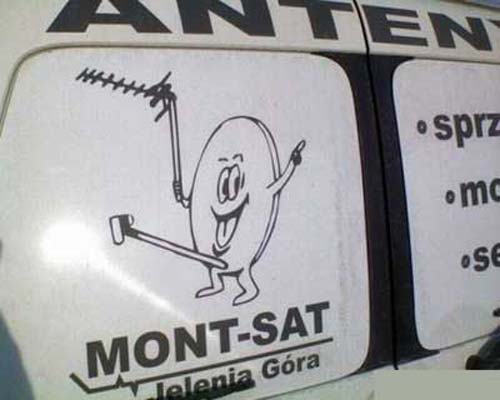
{ Mont-Sat, Poland. Your Regional Service Antenna. Sales, service and installation of antennas TV-SAT (houses, hotels, guest houses). | Mont-Sat }
haha, visual design |
December 16th, 2009

Salami battle in supermarket leaves Germans in hospital
Two Germans needed hospital treatment after they fought a pitched battle in a supermarket with salamis used as clubs and a chunk of Parmesan cheese brandished like a dagger. (…)
He clubbed the younger man with a salami as his mother tried to fend him off with a sharp 4lbs piece of Parmesan.
The pensioner then pushed the woman down on to a glass countertop on which she cracked her head.
{ Telegraph | Continue reading }
photo { Wim Delvoye’s salami floors }
food, drinks, restaurants, incidents |
December 15th, 2009
 98-year-old woman accused of killing 100-year-old room-mate after complaining of too many visitors. Police in Dartmouth initially believed the victim had committed suicide.
98-year-old woman accused of killing 100-year-old room-mate after complaining of too many visitors. Police in Dartmouth initially believed the victim had committed suicide.
Man reports theft of Ecstasy pill collection.
4-year-old boy was found roaming his neighborhood in the night, drinking beer and wearing a little girl’s dress.
40-year-old decided to castrate himself to avoid cheating on his wife who refused to have sex with him.
A French court has split the jackpot from a casino slot machine between the woman who put in the money and the man who pulled the lever, ending months of argument between the two.
Chinese man gets remote control stuck in bottom after drunk prank. While being examined, the tipsy student turned over in bed, and inadvertently changed channel on the ward’s telly.
Giant penis sparks bizarre media war in Germany.
Accenture ends 6-year relationship with Tiger Woods; says no longer the ‘right representative’.
Abu Dhabi gives Dubai $10 billion for use on debt. [previously]
Drug money saved banks in global crisis?
In doing research for my latest book, I was delighted to bump into an equation that predicted the value of wines from Bordeaux without relying on anyone from the swirl, sip, and swish crowd. [PDF]
How to keep the planet’s temperature from rising more than 2 degrees Celsius (35 degrees Fahrenheit).
It may seem odd to add scent to products like sewing thread, automobile tires, and tennis balls, as some companies have done. But a new study says scent helps consumers remember product information.
New quantum theory topples Einstein’s spacetime.
Controversial signs of mass cannibalism 7,000 years ago.
 Ancient DNA retrieved from extinct horse species from around the world has challenged one of the textbook examples of evolution - the fossil record of the horse family Equidae over the past 55 million years.
Ancient DNA retrieved from extinct horse species from around the world has challenged one of the textbook examples of evolution - the fossil record of the horse family Equidae over the past 55 million years.
Panda genome unveiled. DNA clues suggest little inbreeding, surprise on the bamboo diet.
Octopus observed using tools.
Treatment for sleep apnea.
New study shows that women rate men’s photos as more attractive when they’re placed near the top of the screen. By contrast, men rate women’s photos as more attractive when they’re located near the bottom of the screen.
Postpartum depression strikes fathers, too.
A revolution in how people access and use pornography has taken the therapy community by surprise. Now some experts believe that an epidemic of porn use is society’s newest and most challenging mental health problem.
Women are more likely to be chatting it up on Facebook, Twitter and other social networking sites you’ve probably never heard of, like “Bebo.”
Malicious programs are rampaging through Web sites like Facebook and Twitter, spreading themselves by taking over people’s accounts and sending out messages to all of their friends and followers.
Scientists follow earthquakes on Twitter.
Google Analytics is illegal, say German government officials.
How to think like Bill Gates. Related: Stuff I’ve learned at Microsoft.
VC predictions for cell phones in 2010.
10 brands that will disappear in 2010.
Chess boxing is a hybrid sport which combines the sport of boxing with games of chess in alternating rounds.
NYC’s toniest neighborhood also its most polluted.
Finding a parking spot with a broken meter may be the New York equivalent of hitting the jackpot — but, thanks to a new iPhone application, everyone can now be a winner.
Reasons to love NY. [15. Because girls have more fun.]
The world’s fastest animal (the peregrine falcon) takes New York.
275 magazines launched in 2009. Related: After 55 years in publication, I.D. Magazine, America’s foremost design publication, has folded.
The rise of poetry in advertising.
 Why Wittgenstein rejected theories.
Why Wittgenstein rejected theories.
Flipism is an imaginary philosophy, letting all decisions be made by flipping a coin.
On the Origin of Stories attempts an evolutionary explanation of the appearance of art—and, more specifically, of the utility of fiction.
The art market has suffered from the recession, but globalisation should help it recover.
Larry Sultan dies at 63.
Secrets of a food photographer.
On properly heating your pan.
Top Ten Astronomy Pictures of 2009.
Hello from Parrot Jungle.
New Obama.
Soldiers of the U.S. Army 1st Battalion take defensive positions at fire base Restrepo after receiving fire from Taliban positions in Afghanistan’s Korengal Valley. [PIC]
Chocolate-covered bacon on a stick.
Rabbit by street artist Roa.
Successful jump off building.
Santa intimate. [NSFW]
Loop.
every day the same again |
December 15th, 2009






